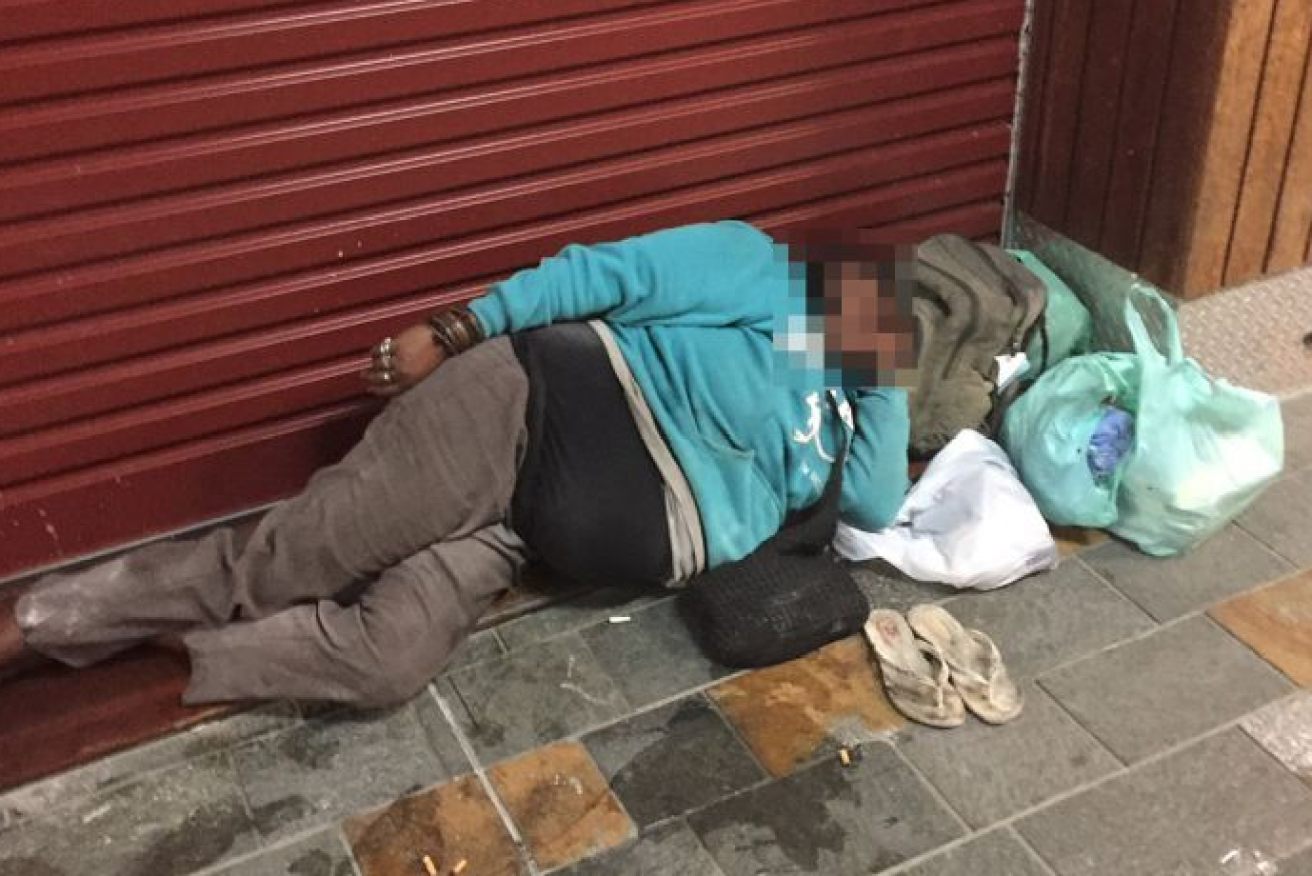Cairns shopkeepers declare ‘sonic war’ on the city’s homeless

Only a massive government program can save the homeless from life on the streets. Photo: ABC: Kristy Sexton-McGrath
Businesses fed up with constant property damage have employed “sonic security” to protect their shopfronts in the far north Queensland tourist city of Cairns.
The security devices emit a high-pitched noise, and were installed at the request of shop tenants who also feared for their safety, but now some are asking if the method is ethical.
Masahiko Nakayama is a cafe owner whose shop windows have been smashed about 20 times over the past three years.
“I have some issues. Sometimes in the middle of the night strangers [are] sitting out front of my shop,” he said.
“Sometime they’re drunken and after that try to smash windows, very dangerous.”
The irritating, high-pitched noise can be heard up to 300 metres away, but within a 50-metre radius the pitch is punishing and provokes a reaction from passers-by.
Installation and use of the device is legal and does not require a council permit, but questions have been raised about the ethics.
Australia’s worst homelessness rate
Cairns has the highest rate of homelessness per capita in the nation, and during the long, tropical wet season shop awnings can often be the only shelter for people living on the street.
Wes moved to Cairns from Rockhampton to find family. Unsuccessful, he is now without a roof over his head and is troubled by the noise emitters.
“It’s quite irritating. It really gets on your nerves,” he said. “It’s one of those noises that really get to you.”

Lyall Forde, who works with Cairns’ homeless, brands the sonic devices as cruel and unethical.ABC Far North: Brendan Mounter Photo: ABC/Brendan Mounter
Lyall Forde from Rosies food van in Cairns said the recently redeveloped Munro Martin Parklands in the CBD was once a gathering place for the homeless. Now the park is fenced off at night.The shops using the noise emitters are directly across the road.
“For so many years [the parklands] was the place where most of the people would sit that had nowhere else to go,” Mr Forde said.
“We would go into the park and we’d have up to 70 people, 80 people every night. We don’t come there now … well, we can’t.”
The park is now part of the city’s new cultural precinct, home to an amphitheatre, vine-covered pergolas and arbours.
“When they made it into a cultural area, [it] became quite different,” he said. “I just don’t know why we have an alarm going because it’s an injustice.”
‘Can’t move them on’
Cairns Chamber of Commerce president Nick Loukas questioned whether the security tactic was a good look for a city that attracted more than 2 million visitors a year.
“I think there’s definitely a line where they should not go above, and leave it to the enforcers,” he said.
Mr Loukas said he was sympathetic to business owners whose bottom line had been hurt by regular maintenance bills, unruly behaviour and threats to staff safety.
“When you have such a problem where you feel there’s not enough things being done to fix it, then they’re going to look for other ways,” he said.
“You can’t just say ‘Get the police to move them on’ because they just put the problem to another area of Cairns.”
He said the chamber was preparing a taskforce to tackle crime in the CBD.
The taskforce will focus on creating a fixed floor price for alcohol, linking social services funding to rehabilitation outcomes, and relocating high numbers of Indigenous homeless people in Cairns back to Cape York communities.
“We quite often get contacted by some of the big government agencies to say ‘We want to do more but we can’t say that’,” Mr Loukas said.
“We’re not constrained. We actually want to help [homeless people in Cairns] get a better life, get them back home.”
James Cook University senior lecturer Narayan Gopalkrishnan has researched homelessness in Cairns extensively and is a policy leader in the field.
He said people living on the streets were just the visible face of a deeper problem.
Much of the homelessness is hidden. What we see is only primary homelessness, which is [those] who are on the street, rough living,” Dr Gopalkrishnan said.
The NIMBY instinct
“Under that there’s a huge number of people who are living in overcrowded situations.”
Contrary to the chamber’s view, Dr Gopalkrishnan said sending homeless people back to their communities would not solve the problem.
He said many of those who fled to places like Cairns from remote parts of far north Queensland were often escaping complex issues such as domestic violence or overcrowding in regional public housing.
“[They say] send them back to their communities. That doesn’t help because the reality is that these are people who are victims,” he said.
“Trying to push them out of visible range is about people saying it shouldn’t be in my backyard.
“In [the wet season] where are the homeless going to go? They can’t live under trees in this kind of weather.”
Better social enterprise, improved support services and social housing should be the future focus for those tackling homelessness in Cairns, according to the researcher.
-ABC








